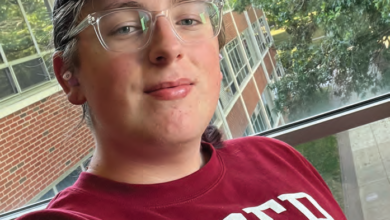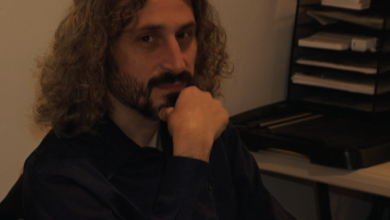Mass shootings: the cause of our PTSD
By
Times Square is where an average of at least 400,000 pedestrians walk through on a daily basis and where chaos is systematic and controlled by New York’s fast-paced way of life.
In the beginning of August, a loud pop sounded in the distance and caused thousands of people to flee and take cover in all different directions. Mothers grabbed their children, partners reached for each other’s hands and diners fled their tables, all in a panic and perhaps thinking one thing — “it’s happening.”
In reality, it was just a motorcycle backfiring. But, what if it was not?
The warm weather and break from school did not make any difference this summer nor did it exempt innocent lives from being robbed by the hands of monsters disguised as everyday people. The public was informed of the two gunmen who committed mass shootings just hours apart, the first one in El Paso, Texas, the next in Dayton, Ohio. There were a total of 31 people killed in less than 24 hours.
The country has become numb to the inhumanity of violent and senseless crimes that take place. We live our lives desensitized to merciless acts of gun violence. From school shootings to hate crimes, we seem to be paralyzed to these closely connected tragedies and that is truly the most alarming part. These ordeals are becoming more ordinary than isolated.
The United States is currently dealing with post traumatic stress disorder (PTSD) due to the immense number of mass shootings that happen almost at a daily rate. Trauma is the emotional shock people experience following emotionally disturbing experiences, whether they are mass shootings, automobile accidents or even a natural disaster, according to ABC News.
“Every time we have a gun violence episode, we accumulate more and more trauma,” Dr. Alauna Curry, a veterans affairs psychiatrist who specializes in psychological trauma, told ABC News.
This is through the lens of U.S. citizens who witnessed mass shootings second hand, either via social media or from their living rooms. Just imagine those who witnessed these atrocities first hand. The National Center for PTSD estimates that 28 percent of people who witness a mass shooting develop PTSD and about a third develop acute stress disorder.
We have to acknowledge that what is currently taking place are acts of domestic terrorism. According to the FBI, domestic terrorism is defined as individuals and/or groups inspired by or associated with primarily U.S.-based movements that espouse extremist ideologies of a political, religious, social, racial or environmental nature. Terrorism is when someone’s basic human right is being denied, from going to school, the grocery store or the mall. When those day-to-day things become threatened, that is when we have to address the issue nationally.
It is easy to place blame when someone else is at fault and hard to acknowledge when we are the ones enabling the problem. We have to acknowledge that we have a gun violence issue domestically. Americans are targeting and killing other Americans at an alarming rate and it is not being taken seriously. Bulletproof backpacks, armed teachers and active shooter drills are all alternatives, not solutions. We are not trying to solve the problem. We are trying to conceal it.
Exactly 18 years ago today the United States remembers one of the most tragic and unforgettable events in history. As we mourn the thousands who lost and sacrificed their lives on that very day, I want to remind us of an important question: Why is it that we react with such patriotism (sometimes irrationally) when the terrorist is a foreign invader? But, why, when the terrorist is a native of the U.S., we tend to turn a blind eye?



